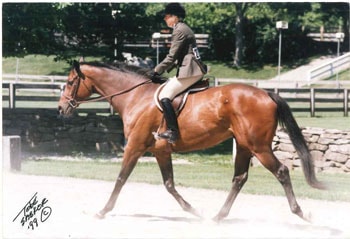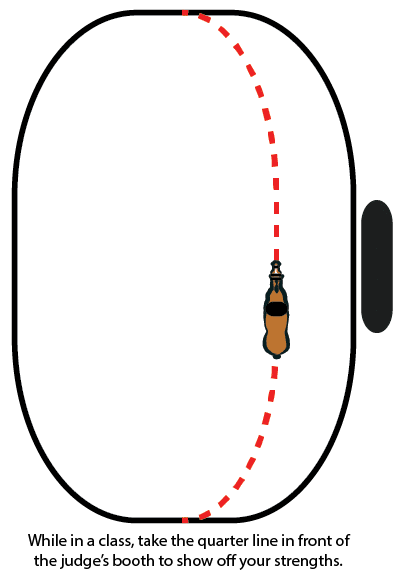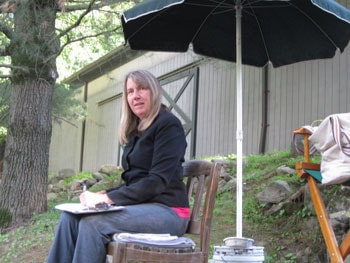The View from the Judge’s Booth
What are Hunt Seat Judges Really Looking For?
We’ve all been there. You put in the best round of your life...and pin fourth. Or you just manage to get around the course, and you...win?! How does that happen? What is the judge thinking?
Judging is a balancing act, something that requires simultaneously processing many variables, and computing the results in minutes.

Yet if you have multiple major faults in the class, breaking and chipping with abandon, you may be surprised with a blue if the rest of the class has refusals or goes off course.
Since hunters and equitation are subjectively judged, each judge’s particular preferences will impact their decision. Overall, judges' placings are generally similar, although we weigh individual qualities and faults differently.
When I learner judged at the Hampton Classic, I pinned the same six horses as the judge I was sitting with during one class, but in a different order. He looked at my card and noted, “You pinned the better jumpers higher, while I pinned the more consistent ones on top.”
Whatever our differences, judges are rooting for you. At the same show I was incredibly fortunate to sit with horse riding legend Rodney Jenkins. When a friend of mine showed her horse in our ring, Rodney literally cheered her around the course. When I told my friend what happened, she could not believe that Rodney Jenkins was cheering for her!
We are on your side.
When you triumph, we are ecstatic. When you goof, we share your pain.
A Horse Judge's General Impressions
The class begins, and you are being judged, as you enter the ring, not when the announcer calls it “to order.” So be sure to get right to work.

Turnout matters. The first impression the judge sees when you enter the ring is your turnout. Is your horse in good weight, impeccably groomed, and your tack and outfit well-fitting and immaculate? Are your keepers in place? Boots polished?
Now that you’ve caught the judge’s eye with your exquisite turnout, what else can you do to ensure his or her attention?
Make passes showing off your horse’s, or your, strong points depending on the class. Does your horse have an awesome trot? Take the quarter line and show off the trot in front of the judge.
If it’s an equitation class, and you can sit your horse as though you’re glued to him, make a pass in front of the judge as well.
Does your horse canter like a sewing machine? Or do you look like a wooden soldier at sit trot? Then stay hidden. Get lost in a crowd of horses, or circle where the judge can’t see you. Always keep in mind that this is a horse show. You need to accentuate the positive, and play down the negative.
And always....have fun!
What Judges Look for in Hunters
A hunter needs to move freely forward out of the shoulder with long low movement and little knee action. Manners and expression are highly important. A good mover with a great expression, in a nice frame, can easily win a class over a great mover who pins its ears and looks sour.
Hunters are shown on light contact. There shouldn't be big loops in the reins, nor should the horse be on the bit like an upper-level equitation mount.
Over fences, hunters need to jump well and be consistent. Their knees should be up tight and even, and they should jump with a nice bascule. Clean flying changes are a must for all but the lowest levels. And good movement is the icing on the cake.
Different qualities are emphasized according to the hunter division. For example, horse temperament is more important in a children’s hunter class, so a horse with a little spook would be penalized. Yet in a pre-green class that spook may be overlooked, as long as the quality of the horse shines through.
What Judges Like in Equitation
In equitation classes, riders are judged on control, position, and effectiveness. Contact in equitation varies: for beginners up through about 3’ a light contact is appropriate, but in the 3’6” “Big Eq” classes, judges want to see horses on the bit.

Riders in the lower levels of the equitation ranks can garner a blue with a smooth, consistent performance. At the top levels, however, riders need to go for the wow! Can you take an inside turn to the next fence? If you can do it well, go for it—you’ll get extra points. But don’t attempt it if you can’t pull it off.
Brianne Goutal’s winning rides in the equitation finals in 2004 provide some great examples of how to wow the judges. Brianne rode brilliantly, planning difficult routes and moves that showcased her extraordinary skills. It paid off when she made history by winning all four junior finals.
In Conclusion
Judges are looking for an overall picture of a harmonious team. They want to see a smooth, even paced, pleasing presentation. And, if you and your horse are capable of it, they love nothing more than a brilliant, show stopping performance!
ABOUT THE AUTHOR: Ann Jamieson (pictured above) always knew she was meant to be a judge. As a teenager, her parents drove her to horse shows and left her there for the day...where she would practice judging from the stands. Ann has now been judging horse shows for nearly 30 years. She earned her official judge’s cards by training several horses from green three-year-olds to year-end award winners in hunters and equitation. She’s also received top references from some of the best judges in the country. Today, Ann also writes for several horse magazines and equine companies.

